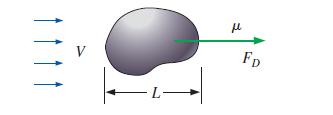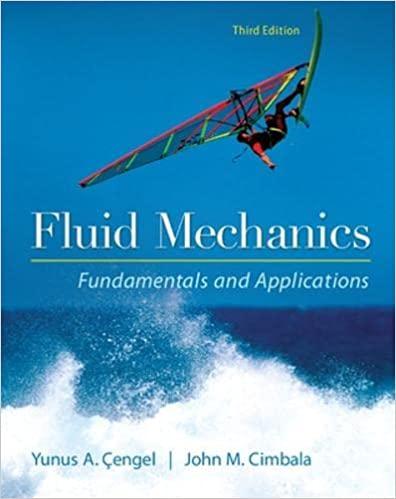Combine the results of Probs. 761 and 762 to generate an equation for the settling speed V
Question:
Combine the results of Probs. 7–61 and 7–62 to generate an equation for the settling speed V of an aerosol particle falling in air (Fig. P7–62). Verify that your result is consistent with the functional relationship obtained in Prob. 7–62. For consistency, use the notation of Prob. 7–62.
Data from problem 7-61
When small aerosol particles or microorganisms move through air or water, the Reynolds number is very small (Re ≪ 1). Such flows are called creeping flows. The aerodynamic drag on an object in creeping flow is a function only of its speed V, some characteristic length scale L of the object, and fluid viscosity μ (Fig. P7–61). Use dimensional analysis to generate a relationship for FD as a function of the independent variables.
FIGURE P7–61

Data from Problem 7-62
A tiny aerosol particle of density ρp and characteristic diameter Dp falls in air of density ρ and viscosity μ (Fig. P7–62). If the particle is small enough, the creeping flow approximation is valid, and the terminal settling speed of the particle V depends only on Dp, μ, gravitational constant g, and the density difference (ρp – ρ). Use dimensional analysis to generate a relationship for V as a function of the independent variables. Name any established dimensionless parameters that appear in your analysis.
Fig. P7–62

Step by Step Answer:

Fluid Mechanics Fundamentals And Applications
ISBN: 9780073380322
3rd Edition
Authors: Yunus Cengel, John Cimbala





